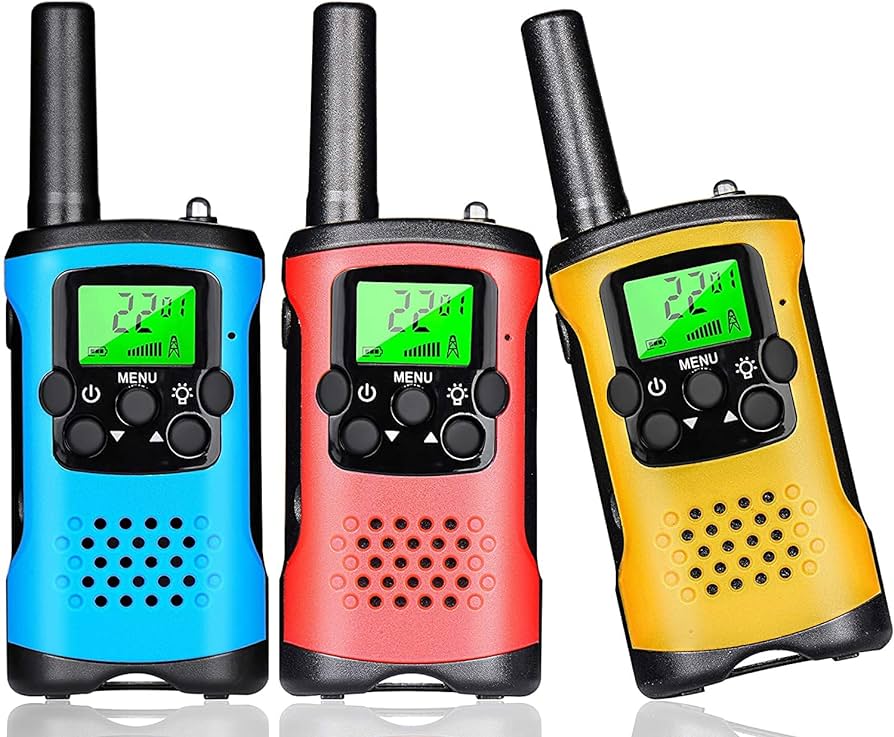Walkie-talkies, also known as two-way radios, operate on radio frequencies to allow communication between devices over short to medium distances. One of their defining features is their ability to function independently of internet or cellular networks, making them particularly useful when such networks are unavailable, unreliable, or unnecessary.
Contents
How Walkie-Talkies Work
Walkie-talkies function by transmitting voice signals over radio waves. Each device contains a transmitter and a receiver. When a user speaks into the device, their voice is converted into an electrical signal, which modulates a radio frequency signal. This modulated signal is then broadcast through the air. The receiving walkie-talkie captures this signal with its antenna, demodulates it to retrieve the voice signal, and converts it back into sound.
Frequencies and Channels
Walkie-talkies operate on various frequency bands, typically in the Very High Frequency (VHF) or Ultra High Frequency (UHF) ranges. VHF frequencies (30 MHz to 300 MHz) are better for outdoor use with fewer obstructions, while UHF frequencies (300 MHz to 3 GHz) penetrate buildings and other structures more effectively, making them suitable for urban environments.
Each frequency band is divided into channels, and users must select the same channel on their devices to communicate with each other. The use of multiple channels allows users to avoid interference from other nearby walkie-talkie users.
No Need for Internet
A significant advantage of walkie-talkies is their ability to function without an internet connection. This makes them ideal for use in remote areas, during outdoor activities like hiking or camping, or in emergency situations where internet and cellular networks may be down. Because they rely on direct radio communication between devices, they are not dependent on external infrastructure, ensuring reliability and independence from network congestion or outages.
Applications of Walkie-Talkies
Walkie-talkies are widely used across various sectors due to their reliability and ease of use:
Emergency Services: Police, fire departments, and medical personnel use walkie-talkies to coordinate their efforts quickly and efficiently during emergencies.
Outdoor Activities: Hikers, campers, and adventurers use them to stay in touch in areas without cellular coverage.
Construction and Event Management: Workers and organizers use walkie-talkies to maintain communication on large sites where other forms of communication might be impractical.
Recreational Use: Families and groups often use walkie-talkies during vacations, amusement park visits, and other group activities to stay connected without incurring mobile phone charges.
Advantages Over Internet-Dependent Devices
While internet-connected devices offer many features, walkie-talkies provide several distinct advantages in specific scenarios:
Instant Communication: Unlike phones, which require dialing and waiting for connections, walkie-talkies offer instant communication with the push of a button.
No Signal Dependency: Walkie-talkies operate independently of cellular towers and internet connectivity, making them reliable in remote or disaster-stricken areas.
Durability: Many walkie-talkies are designed to be robust and weather-resistant, suitable for harsh environments.
Cost-Effective: There are no monthly service fees or usage charges with walkie-talkies, making them a cost-effective communication solution.
Limitations
Despite their benefits, walkie-talkies also have some limitations:
Range: The range of walkie-talkies is generally limited to a few miles, although this can vary based on the environment and the power of the devices.
Interference: Walkie-talkies can experience interference from other devices operating on the same or nearby frequencies.
Limited Features: Compared to smartphones and other internet-connected devices, walkie-talkies offer fewer features and functionalities.
Conclusion
Walkie-talkies are a practical communication tool that does not require an internet connection, making them invaluable in various situations where traditional mobile phones might fail. Their simplicity, reliability, and independence from external networks ensure they remain relevant despite the proliferation of modern communication technologies. Whether for professional use in emergency services, recreational activities in remote areas, or simply as a reliable backup during network outages, walkie-talkies continue to be an essential tool for effective communication.
